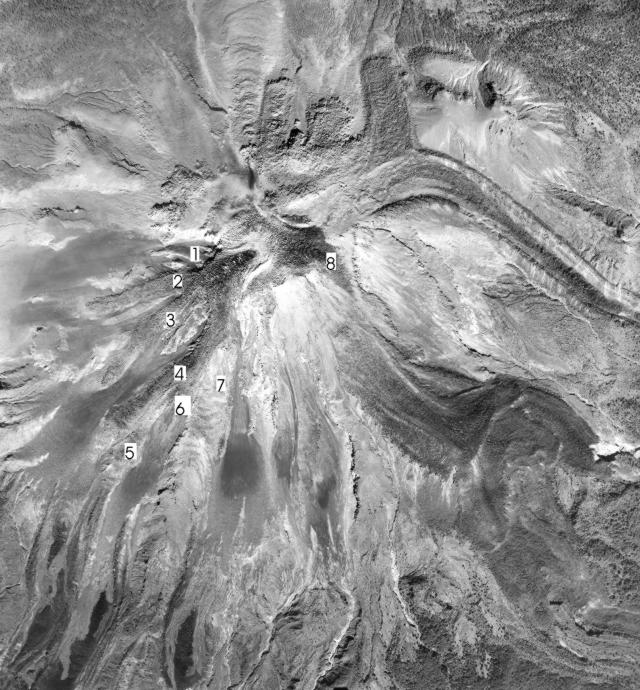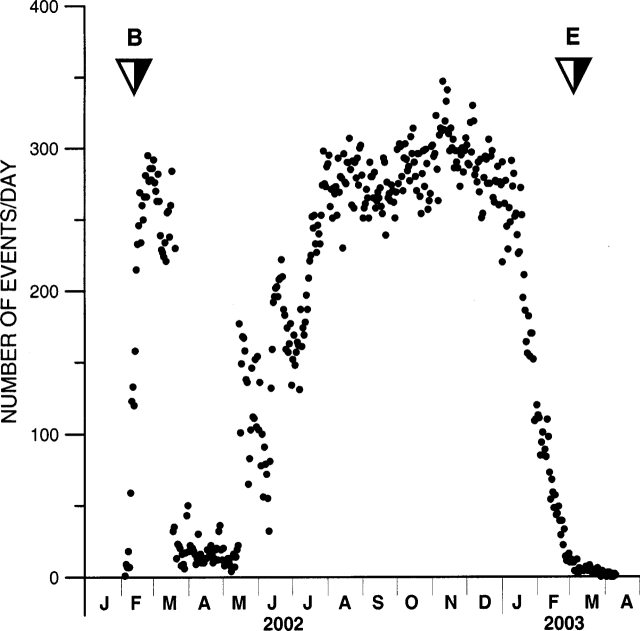Report on Colima (Mexico) — June 2003
Bulletin of the Global Volcanism Network, vol. 28, no. 6 (June 2003)
Managing Editor: Edward Venzke.
Colima (Mexico) Year-long eruption ended in late February 2003 after eight lava flows
Please cite this report as:
Global Volcanism Program, 2003. Report on Colima (Mexico) (Venzke, E., ed.). Bulletin of the Global Volcanism Network, 28:6. Smithsonian Institution. https://doi.org/10.5479/si.GVP.BGVN200306-341040
Colima
Mexico
19.514°N, 103.62°W; summit elev. 3850 m
All times are local (unless otherwise noted)
Effusive activity that began at Colima on 14 February 2002 (BGVN 27:05 and 27:11) had stopped by the end of February 2003. Eight lava flows were emitted during this eruption (figure 64). The total volume of effusive material was calculated to be ~8.3 x 106 m3. That number includes the lava dome (2 x 106 m3) and lava flows (4.3 x 106 m3), in addition to pyroclastic-flow and rockfalls deposits (2 x 106 m3). A plot showing the daily number of rockfalls reflects the level of activity over the course of the eruption (figure 65).
Weak gas explosions occurred in March 2003. As of April there were still observations of night glow at the summit, degassing, and 10-20 daily seismic events. However, no deformation had been noted.
Geological Summary. The Colima complex is the most prominent volcanic center of the western Mexican Volcanic Belt. It consists of two southward-younging volcanoes, Nevado de Colima (the high point of the complex) on the north and the historically active Volcán de Colima at the south. A group of late-Pleistocene cinder cones is located on the floor of the Colima graben west and east of the complex. Volcán de Colima (also known as Volcán Fuego) is a youthful stratovolcano constructed within a 5-km-wide scarp, breached to the south, that has been the source of large debris avalanches. Major slope failures have occurred repeatedly from both the Nevado and Colima cones, producing thick debris-avalanche deposits on three sides of the complex. Frequent recorded eruptions date back to the 16th century. Occasional major explosive eruptions have destroyed the summit (most recently in 1913) and left a deep, steep-sided crater that was slowly refilled and then overtopped by lava dome growth.
Information Contacts: Observatorio Vulcanológico de la Universidad de Colima, Colima, Col., 28045, México (URL: https://portal.ucol.mx/cueiv/).



